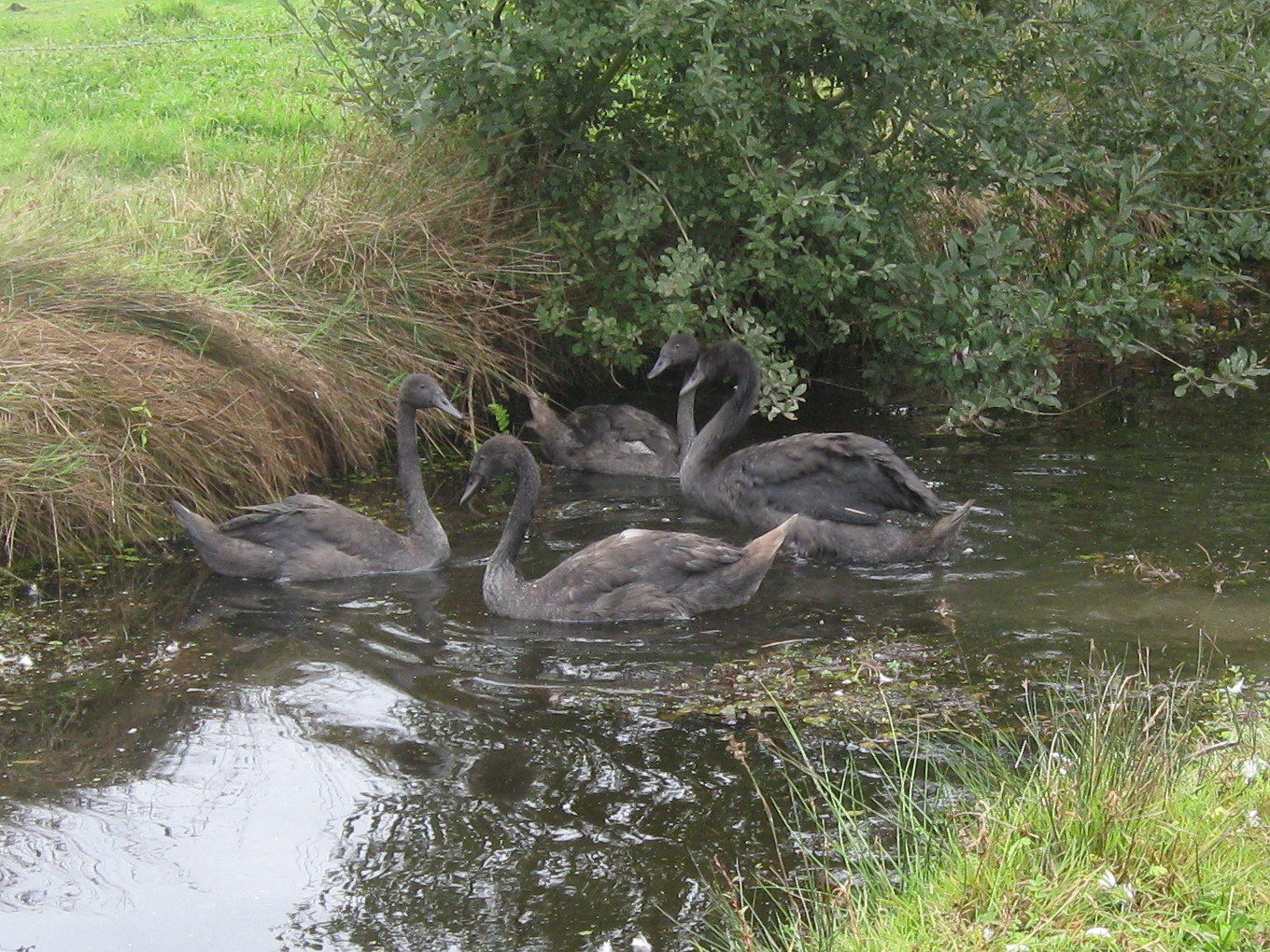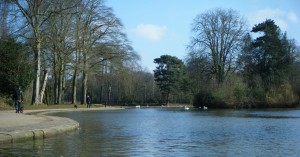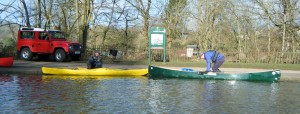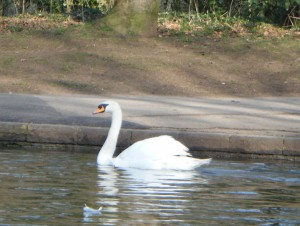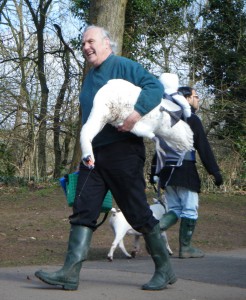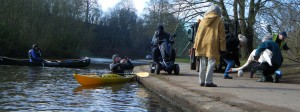It’s high time we did a bit of catching up; so, of necessity, this will be a bit skimpy!
All photographs in what follows,except the Wells swan ringing the bell ( yet to be posted) are by Ellen.
01.01. Called to Cosmeston LCP to provide assistance to a very wet and underweight (only 520 grams) Buzzard. Sadly, he was too far gone, but at least he died in the warm ….
04.01. To Cyfarthfa Castle, Merthyr in response to a report of a major dispute between a Canada Goose and a Muscovy Duck; observed for nearly an hour in the cold, during which time saw nothing untoward.
From here to Blaen-y-Pant, Newport in response to a report a lone swan had a lump in his neck. Unable to confirm this, but realised this bird was one we had released at The Knap on 11th. December, and which had been driven from Blaen-y-Pant onto Malpas Road on 24th. November. All seemed to be well, so no action taken at this time … but watch this space for our March stories …!
06.01. Distressed bat recovered from an address in Tongwnlais – eventually started to feed itself after 2 – 3 weeks; now (mid-March) waiting for some warmer weather in order to release it.
Steve helped out by retrieving a pair of swans from Rhoose Point; they had arrived there and, immediately, had incurred the wrath of the resident pair, and were driven off – exhausted. The female had been ringed 18 months earlier at Cosmeston LCP. This pair was eventually re-homed on a private pond in Wiltshire.

A new home for the Rhoose Point invaders.
08.01. To Holme Lacey, Herefordshire to follow up a report of a distressed swan (territorial dispute?) on flooded flood plain. All appeared very peaceful; no action required. Did our best to reassure her the swan was uninjured, and not in any sense in danger.
10.01. Call from Estates Dept. Yate Town Council regarding lone juvenile (aka ‘Lily’) on Brinsham Fields pond which was carrying fishing line from its beak; decided to leave this one to Neil and Teresa, who succeeded in de-tackling her on14th, but visited Kingsgate Park where a territorial dispute had broken out; see our newsletter No. 44. Removed, into care to RSPCA West Hatch, a large friendly juvenile’ belonging’ to the incoming adult pair.
11.01. Grounded juvenile on southbound entry slip road to Link Road at Leckwith rescued and into care – also at West Hatch.
Received report of ‘tackled’ swan off Cardiff Bay Yacht Club – dealt with by the ‘locals’.
15.01. Female of a pair on canal at Jersey Marine, Swansea reported to be unable to walk; attended the following day and taken to National Swan Sanctuary on 17th., along with very underweight juvenile retrieved from industrial area at Lydney.

The Jersey Marine pair a short while before she became unable to walk.
18.01. Very heavy snow overnight – confined to barracks!
20.01. Call from police in Bristol; grounded adult swan on St. Pauls Causeway. Attended, but RSPCA arrived minutes earlier.
21.01. Another Buzzard call; on river bank (R. Rhymney) near Michaelstone. Very weak and underweight (616 grams); took it to Vale Wildlife Rescue immediately, but it was too far gone to stand any real chance of surviving. (We don’t have much luck with these …).
22.01. Visit to one of our regular ‘black spots’ Tredelerch Lake off Lamby Way; the cob is trailing fishing line from his beak. By the time we arrived, we have to conclude he must have swallowed it … no sign, and all appears to be well.
Almost simultaneously, John calls from Caerphilly Castle moat – the female has a ‘face full of fishing line’, including weights. With the light fast fading, there was little point in going to Caerphilly this evening.
23.01. John calls again; overnight, one way or another, the swan has ‘lost’ the mass of fishing line she was carrying. No further action needed at this time.
25.01. A lone male has been driven from its territory by a pair of incomers at Curry Pool, some distance to the west of Bridgwater in Somerset – we’ve been here a number of times before. It took three of us a while – some patience, and a modicum of guile ( or was it luck) to capture this chap. In a sense, he was trapped and needed to be moved on; we released him at Herriot’s Bridge at the southern end of Chew Valley Lake. He had been ringed as a 2 year old (at least) at Abbotsbury in July 2011.

Release of displaced ‘Curry Pool’ male at Herriots Bridge.
27.02. Desperate call from a tennis coach at St Georges Park, Bristol; a juvenile from the adjacent lake had landed on one of the tennis courts; easy to catch! Took advantage of the situation to remove the other last remaining juvenile from the lake; it was clear the adults were indicating strongly to their off-spring it was time to move on, and the local history is littered with problems of such birds coming down in the surrounding built up area. Both these birds were released at The Knap, Barry.
28.01. Roath Park Lake, Cardiff is very full as a result of all the recent melt water. A juvenile had been swept down the flume at the south end of the lake, and was looking very sorry for itself; successful rescue and taken into care.
Simultaneously, received a call from car-park attendant at Neath- Port Talbot Hospital concerned at inability of one of the cygnets to move. This is a really long and complicated story, but it culminated in, guess what ? – another territorial dispute resulting in the resident pair being displaced, but complicated by the fact the female had gone awol at the time of our visit; she reappeared the following day, and had to be rescued from the invaders by Brenda and Trevor. There really are many twists and turns to this story, but the adults ended up on the moat at the Bishop’s Palace at Wells Cathedral in Somerset.

Wash and brush up, shortly after arrival at Wells.
NB Further picture to appear here when system behaves itself!
29.01. To Shepperton with the Roath Park swan from yesterday,returning with a fully restored female to be taken back to Jersey Marine tomorrow.
30.01. Gave a ‘swan talk’ to Machen Probus Club this morning, and then down to Swansea to release the female at Jersey Marine. Over the years, we’ve not had much luck with joyful reunions, and this was no exception. When we arrived, there was no sign of the cob, so we had no option but simply to release her. As soon as the wrap was off, she was gone – barely on the water before she was airborne and flying, it seemed as fast as she could, westwards towards Port Tennant and Swansea.
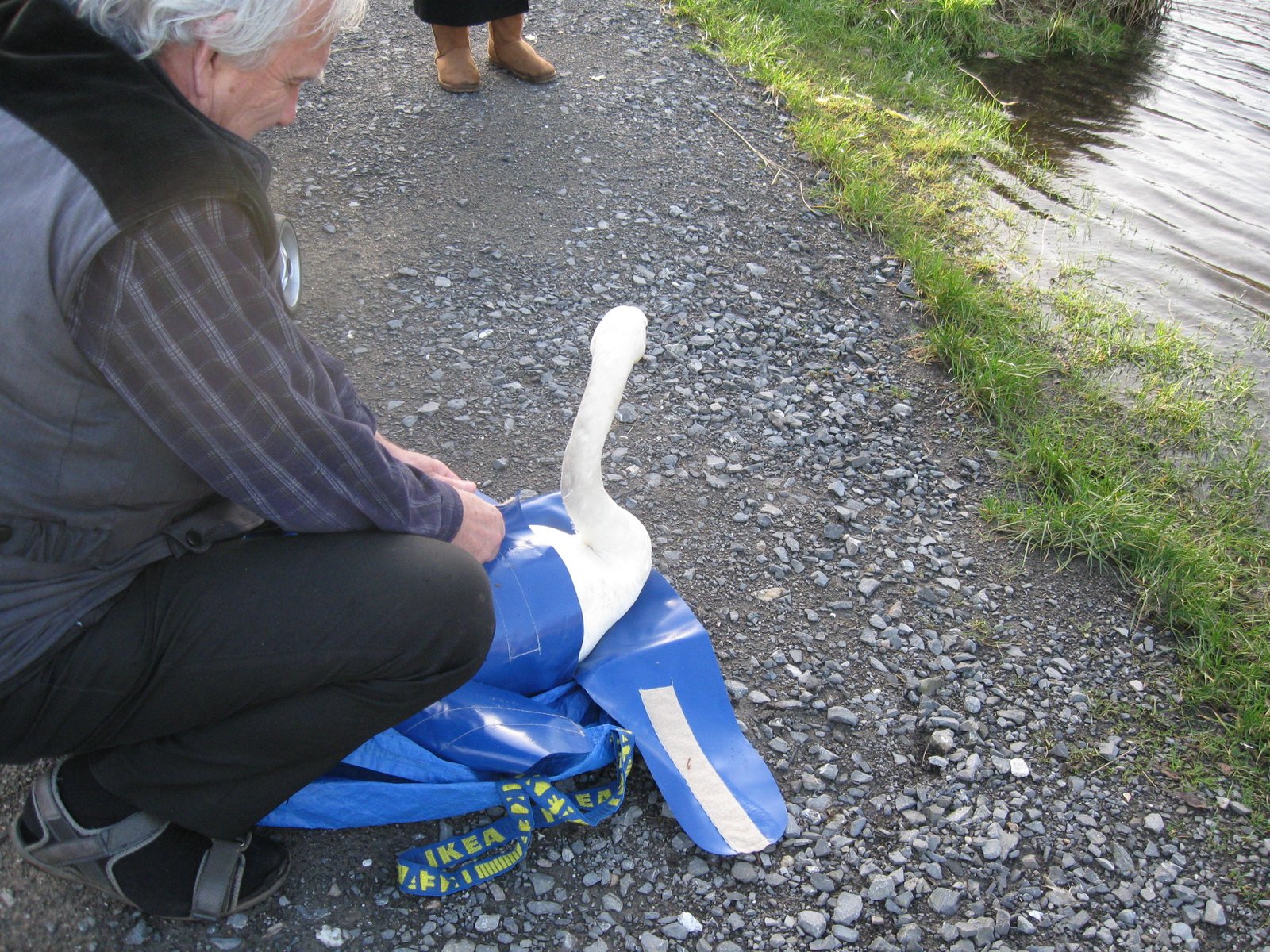
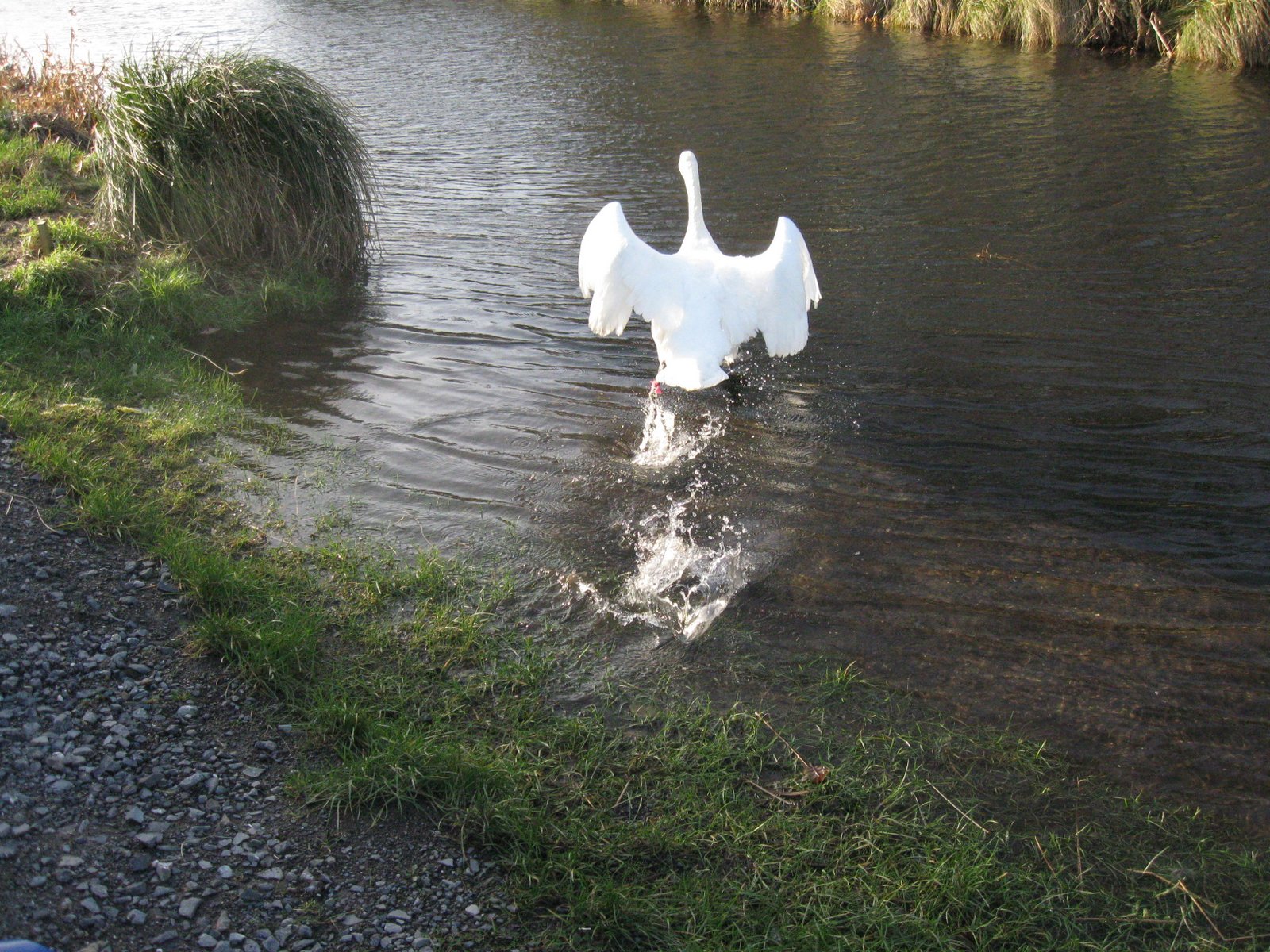
‘Gosh! There’s no holding me now!’
While all this was going on, we received a call from Teresa to tell us, once again that Lily is carrying yet another chinstrap. Here beginneth yet another saga….
31.01. To Shepperton once again with the female from Neath-Port Talbot Hospital – this was an excellent reunion – and three birds form The Secret World of Nature which were in need of long term specialist care.
Called back via Brinsham, Yate to see if we stood any chance of catching Lily; definitely none whatsoever …!











